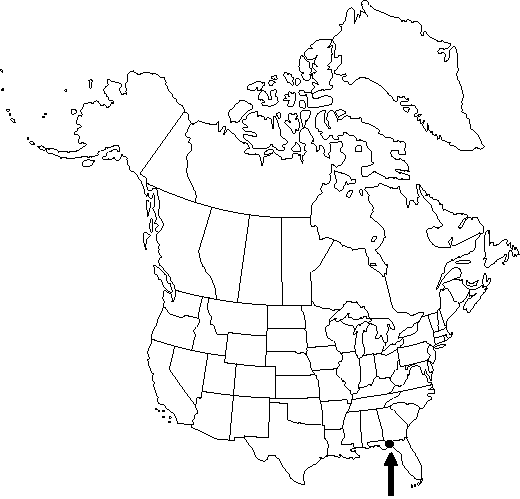Difference between revisions of "Torreya taxifolia"
Ann. Nat. Hist. 1: 130. 1838.
FNA>Volume Importer |
FNA>Volume Importer |
||
| Line 31: | Line 31: | ||
--><p>Of conservation concern.</p> | --><p>Of conservation concern.</p> | ||
|tables= | |tables= | ||
| − | |references= | + | |references={{Treatment/Reference |
| + | |id=coulter1905a | ||
| + | |text=Coulter, J. M. and W. J. G. Land. 1905. Gametophytes and embryo of Torreya taxifolia. Bot. Gaz. 39: 161--178. | ||
| + | }}{{Treatment/Reference | ||
| + | |id=fish1986a | ||
| + | |text=Fish and Wildlife Service [U.S.D.I.]. 1986. Florida Torreya (Torreya taxifolia) Recovery Plan. Atlanta. | ||
| + | }}{{Treatment/Reference | ||
| + | |id=godfrey1962a | ||
| + | |text=Godfrey, R. L. and H. Kurz. 1962. The Florida torreya destined for extinction. Science 136: 900, 902. | ||
| + | }}{{Treatment/Reference | ||
| + | |id=kurz1939a | ||
| + | |text=Kurz, H. 1939. Torreya west of the Apalachicola River. Proc. Florida Acad. Sci. 3: 66--77. | ||
| + | }}{{Treatment/Reference | ||
| + | |id=mahan1989a | ||
| + | |text=Mahan, L. R. 1989. Conservationists join forces to save Florida torreya. Center Pl. Conservation 4(1): 1, 8. | ||
| + | }}{{Treatment/Reference | ||
| + | |id=savage1983a | ||
| + | |text=Savage, T. 1983. A Georgia station for Torreya taxifolia Arn. survives. Florida Sci. 46: 62--64. | ||
| + | }}{{Treatment/Reference | ||
| + | |id=stalter1984a | ||
| + | |text=Stalter, R. and S. Dial. 1984. Environmental status of the stinking cedar. Bartonia 50: 40--42. | ||
| + | }} | ||
}}<!-- | }}<!-- | ||
| Line 47: | Line 68: | ||
|elevation=15–30 m | |elevation=15–30 m | ||
|distribution=Fla.;Ga. | |distribution=Fla.;Ga. | ||
| − | |reference= | + | |reference=coulter1905a;fish1986a;godfrey1962a;kurz1939a;mahan1989a;savage1983a;stalter1984a |
|publication title=Ann. Nat. Hist. | |publication title=Ann. Nat. Hist. | ||
|publication year=1838 | |publication year=1838 | ||
|special status= | |special status= | ||
| − | |source xml=https://jpend@bitbucket.org/aafc-mbb/fna-data-curation.git/src/ | + | |source xml=https://jpend@bitbucket.org/aafc-mbb/fna-data-curation.git/src/f50eec43f223ca0e34566be0b046453a0960e173/coarse_grained_fna_xml/V2/V2_729.xml |
|genus=Torreya | |genus=Torreya | ||
|species=Torreya taxifolia | |species=Torreya taxifolia | ||
Revision as of 21:52, 16 December 2019
Trees to 13(–18) m; trunk to 8 dm diam.; crown rather open-conical. Branches spreading to slightly drooping; 2-year-old branches yellowish green, yellowish brown, or gray. Leaves 1.5–3.8 cm, abaxial side with 2 scarcely impressed, grayish bands of stomates, rounded on adaxial side, emitting fetid odor when crushed. Pollen cones pale yellow. Seed (including aril) 2.5–3.5 cm; aril glaucous, dark green, streaked with purple.
Habitat: River bluffs, slopes, and moist ravines
Elevation: 15–30 m
Discussion
Torreya taxifolia is a rare endemic mainly along the Apalachicola River.
Populations of Torreya taxifolia were thriving until the 1950s, but since then they have been decimated by fungal disease (R. L. Godfrey and H. Kurz 1962). Only nonreproductive stump sprouts remain in the wild. The Florida torreya was listed as federally endangered in 1984 under the U.S. Endangered Species Act, and efforts are underway to reestablish this once thriving species in its native habitat (L. R. McMahan 1989).
Of conservation concern.
